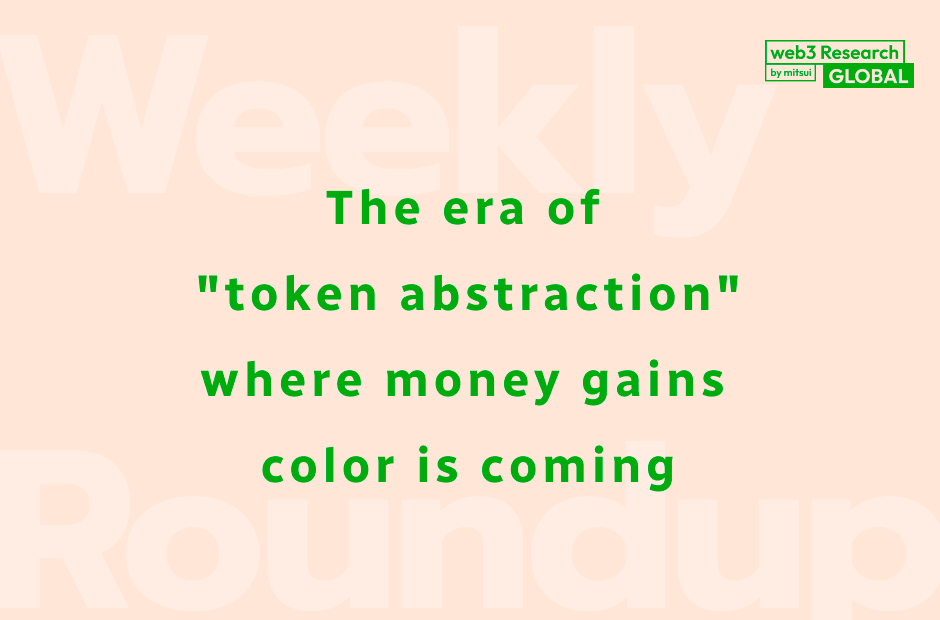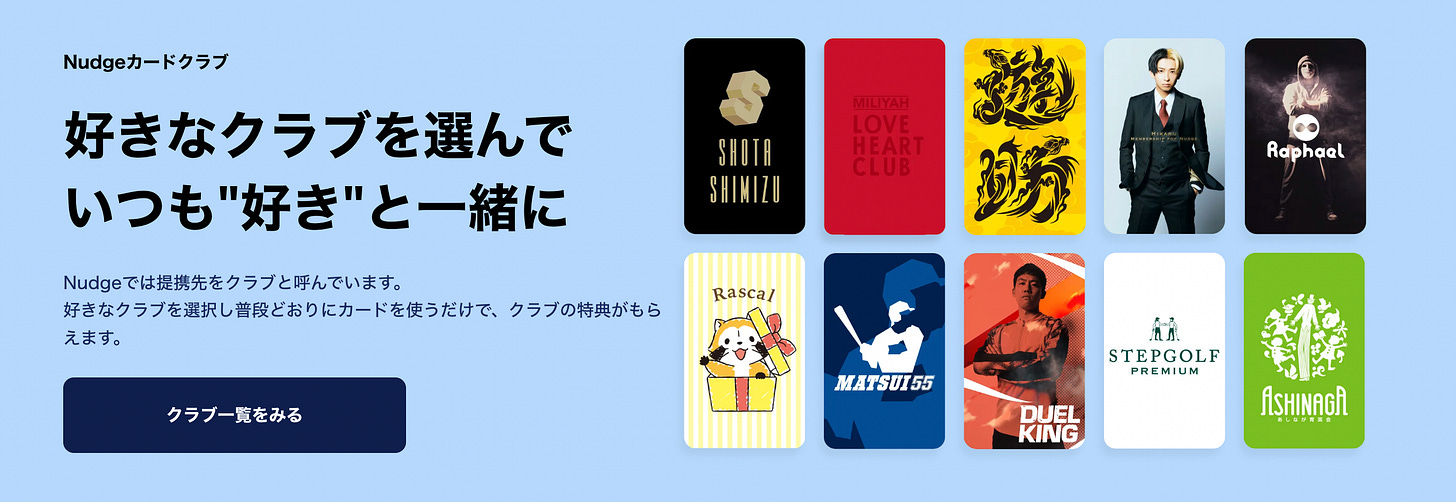Good morning.
I am Mitsui, a web3 researcher.
Every Saturday, I write a reflection article on the past week. If you haven't read any articles yet, please take a look when you have time on the weekend!
Research Articles of the Week
Above, I have updated 6 articles this week.
In particular, I believe that the article explaining the report released by Binance Research is very helpful in understanding the overall market. I myself have learned a lot from it. Please take a look if you're interested!
3 Selected News That Caught My Attention Personally
I will highlight three news articles that caught my attention among the 40 news analyses updated during weekdays at noon.
Chinese Compliant Blockchain "Conflux" to Launch Bitcoin L2 Compatible with EVM
The Layer 1 blockchain "Conflux Network" announced the launch of a Bitcoin Layer 2 compatible with EVM (Ethereum Virtual Machine) on the 18th.
The testnet is scheduled to be operational by the end of March, and the mainnet launch is targeted for May.
Conflux (CFX) is a cryptocurrency project launched in 2018, which adheres to the regulations of the Chinese authorities.
dYdX v4 Becomes the Largest DEX in 24h Trading Volume, Surpassing "Uniswap"
The 24-hour trading volume of dYdX has surpassed the trading volume of Uniswap, becoming the largest among all DEXs.
At the time of writing this article (1/19 12:30), the 24-hour trading volume reached approximately $641 million (about 95 billion yen), while the second-highest trading volume was around $535 million on Uniswap, which is built on Ethereum.
Magic Eden Announces NFT Token Issuance and Protocol DAOization Plan
Magic Eden, an NFT marketplace, announced its collaboration with Non-Fungible DAO to open-source the minting and trading protocols.
They plan to launch a cryptographic token called "NFT" to provide rewards to DAO governance and NFT traders.
They also announced plans to expand the existing Diamonds reward program.
The token issuance chain and details have not been disclosed yet.
The Era of "Token Abstraction" where Money Gains Color
Lastly, I will write about something I have been thinking about recently.
"Token Abstraction" is a newly coined term. (There may be some examples mentioned elsewhere, but I am using it here for convenience.)
The concept of abstraction has spread in the world of blockchain, and recently the concept of Chain Abstraction has also emerged. It is difficult to provide an exact definition, but I interpret it broadly as a state where it can be used without conscious effort. While the term abstraction is used to imply the technical meaning of freeing from restrictions like EOA for the original abstraction concept, I interpret it more broadly because it ultimately allows for the use without being conscious of the wallet.
So, what I think "Token Abstraction" means is the ability to use tokens without being aware of them, but I have envisioned more specific use cases. It is not about the liberation of gas fees or gasless transactions.
For example, when issuing tokens using the ERC-20 standard, you can freely transfer them using protocols that are compatible with the same standard, and you can swap them with any other tokens. However, the biggest barrier when issuing your own tokens lies in the design of tokenomics.
Obviously, if this is not done properly, the token price will drop, liquidity will decrease, and the token will lose its value.
I believe that in the future, it will be possible to issue custom tokens with the same functionalities as ETH. Let's say I issued mitsuiETH (mETH). Since mETH is exactly the same as ETH, it can be used in all protocols that accept ETH.
Though it is a concept similar to wrapping, WrapETH requires the development of protocols that are specifically designed for it, so it is slightly different. I won't go into the technical details of how mETH will be implemented here; I will just leave it as an image.
So why is there a need to issue mETH, and why would users bother using mETH? This is a discussion about "branding" or "fan activities".
There is a service called Nudge that issues credit cards. This service not only allows for easy credit card issuance, but also enables users to create cards with their favorite designs. Additionally, a portion of the card usage amount goes to support their favorite person, and depending on the usage frequency and amount, users can receive benefits from their favorite person.
In simple terms, I believe that the same thing happens in the world of tokens.
Let's say I am interested in environmental issues and I use gETH (green ETH) regularly. In that case, a portion of the transaction fees would be donated to global environmental issues, and a loyalty program based on transaction volume and frequency would be set up, allowing access to limited NFTs and events.
Recently, when I issued Research tokens, I strongly felt that it is extremely difficult to generate and circulate tokens from scratch and build economics. And it is even more difficult to sustain it, not just temporarily.
Thanks to the benefits and interoperability of blockchain, if I can copy a token with interoperability from the beginning and only change the external appearance to my own brand, I don't need to set my own tokenomics. Fees would be received by myself with each transaction, and automatic distribution of rewards based on user's on-chain activities would be possible.
Changing only the external appearance to my own brand is something that commonly happens in the real world. In modern times, factories producing clothes for Uniqlo and GUCCI are often the same. The materials and quality are the same, but the prices differ depending on the brand, and the customer's experiential value of purchasing it also differs. Ultimately, the value of the product includes the experiential value, including the brand. So, I think it's okay if the same can be done with tokens.
Therefore, infrastructure layers like ETH will be positioned even deeper and become the foundation for token issuance, and users will enter an era where they can use their preferred tokens. This is an era where money takes on different colors, and it reflects one's identity even in the choice of currency. It seems that this can be easily achieved with tokens. I'm excited about it.
That's all for my thoughts on token abstraction.
Also, thank you for reading the newsletter this week. We will continue to update it daily starting from tomorrow, so please stay tuned!
Disclaimer:I carefully examine and write the information that I research, but since it is personally operated and there are many parts with English sources, there may be some paraphrasing or incorrect information. Please understand. Also, there may be introductions of Dapps, NFTs, and tokens in the articles, but there is absolutely no solicitation purpose. Please purchase and use them at your own risk.
About us
A web3 newsletter delivered in five languages around the world. We deliver various articles about web3, including project explanations, news and trend analysis, and industry reports, every day. You can subscribe for $8 per month ($80 per year) and receive research articles that took 100 hours to complete every day.
Author
mitsui
A web3 researcher. Operating the newsletter "web3 Research" delivered in five languages around the world.
Contact
The author is a web3 researcher based in Japan. If you have a project that is interested in expanding to Japan, please contact the following:
Telegram:@mitsui0x
*Please note that this newsletter translates articles that are originally in Japanese. There may be translation mistakes such as mistranslations or paraphrasing, so please understand in advance.




![[Binance Research In-Depth Analysis ①] Market Trends for Cryptocurrencies, L1, and L2 in 2023](https://substackcdn.com/image/fetch/$s_!SiDJ!,w_140,h_140,c_fill,f_auto,q_auto:good,fl_progressive:steep,g_auto/https%3A%2F%2Fsubstack-post-media.s3.amazonaws.com%2Fpublic%2Fimages%2Fd1abef9c-8e2b-4a7a-bba9-99816643fbf4_3760x2480.png)
![[Binance Research In-Depth Analysis ②] Market Trends for DeFi, Stablecoins, NFTs, GameFi, and SocialFi in 2023](https://substackcdn.com/image/fetch/$s_!it24!,w_140,h_140,c_fill,f_auto,q_auto:good,fl_progressive:steep,g_auto/https%3A%2F%2Fsubstack-post-media.s3.amazonaws.com%2Fpublic%2Fimages%2Fe1958dba-9f3a-49b9-8b83-f2177f08e20e_3760x2480.png)
![[Binance Research In-Depth Analysis③] Fundraising Information in 2023, Institutional Investors' Activities, 8 Areas of Focus in 2024, and Overall Impressions and Observations](https://substackcdn.com/image/fetch/$s_!jVv0!,w_140,h_140,c_fill,f_auto,q_auto:good,fl_progressive:steep,g_auto/https%3A%2F%2Fsubstack-post-media.s3.amazonaws.com%2Fpublic%2Fimages%2F4811b746-0626-4eb8-8477-900d7e0b69f7_3760x2480.png)


